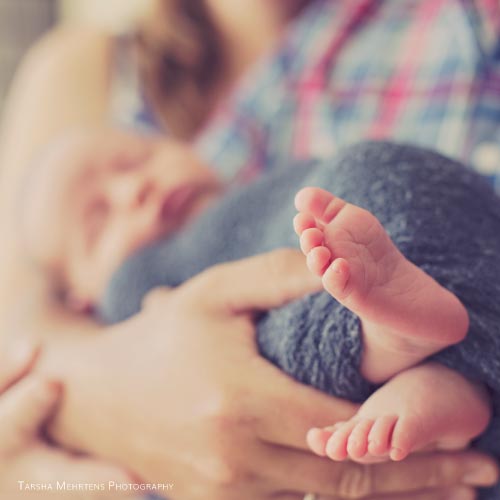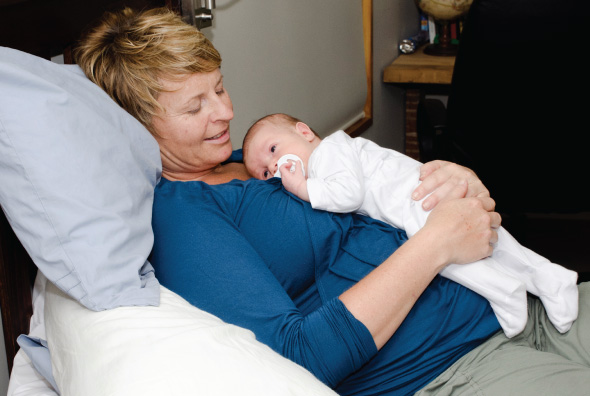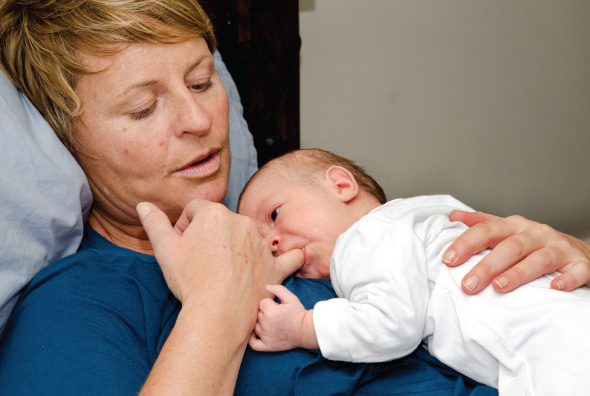Co-sleeping - snuggle up safely

There is nothing like it - snuggling up with your baby, especially skin-to-skin. The smell, the peace that radiates outward from Mum and baby, or Dad and baby really isn't comparable and thankfully, more and more co-sleeping is being accepted as a possible holistic health benefit for the entire family when performed safely. Here at BabyCues I promote safe co-sleeping because of the physical and mental health benefits to both baby and parents, like:
- fostering attachment and intimate love
- providing more security
- generally has baby sleeping longer
- sets up your newborn's body clock for good developmental sleep during the day and night
- regulates breathing patterns and heart rate
- significantly reduces crying, which means, theoretically, more energy goes into growth
- lessens the stress hormone cortisol for baby and Mums that may feel a little anxious about having baby away from them
- aids digestion because the body feels relaxed
- has babies staying close to what they know, the sound of a beating heart
- offers stable temperatures
- decreases the effects of sleep deprivation, leading to a healthier mental state for parents and baby which leads to an improved environment
- helps breast milk supply as the mother rests well and is less anxious.
For a while now when someone mentions the word co-sleeping, a vision of a baby laying beside the parents in bed pops into the mind - this is the kind of co-sleeping I don't receommend because this may result in very tired parents rolling onto their baby. BabyCues Safe Snuggle however, nullifies this possibility by placing newborns in a position that stops parents from unconsciously rolling as they will feel like they are falling, thus waking them up.
BabyCues Safe-Snuggle method



- prop your torso up slightly with pillows so that you are half lying down
- place your baby into the Belly Flop position on your chest. Having them on your chest means you are conscious of them before you roll over.
- turn baby's head to lie on their ear so they can hear the familiar sound of your heartbeat
- provide their natural comfort of sucking with your finger or pacifier (I prefer the finger in the early weeks at this time because you can re-stimulate sucking quickly)
- gently straighten out their legs (if they have outgrown the foetal stage)
- put the flat of your other hand across their back to feel wind movement and provide extra security
- slow down your own breathing as you start to relax into sleep mode. This will generally have your baby's body relaxing into you and therefore into sleep
- stroke down and over your baby's eyes and nose to stimulate sleep.
If your newborn happens to experience the startle reflex from a movement in their digestion while using the Safe Snuggle, lying on their stomach instead of their back instantly has them feeling more secure because their arms feel something; whereas when a baby is on their back and their arms startle out into air, with the shock of 'nothingness' they often cry more. The same applies to their legs. In the Safe Snuggle they can feel something under their knees when they have a spasm of pain that has them instinctively curling up their legs in response.
You may sometimes hear your baby make gasping, swallowing noises while on you. They are trying to control a burp that needs releasing. When this happens, sit up and, keeping their ear on your chest, tuck their legs under them. Rub their back and wait for the burp. It should come within five minutes. The Safe Snuggle can also be used throughout the day to establish a good body clock rhythm of sleep, or in Step One of Nature's Wind Sequences if your back needs a rest.
Digest these facts
- Never co-sleep with baby on a waterbed.
- Avoid overheating by dressing baby lightly and covering with a light sheet and blanket. The general rule for a newborn to feel warm is to dress them in one more layer than what you have on. If you ever need to gauge their temperature, place your lips on their forehead. If they feel hot, use a thermometer to get a reading.
- Make sure your partner knows baby is in bed with you.
- If you are taking medication that makes you extra sleepy, you smoke or have been drinking alcohol — avoid co-sleeping.


